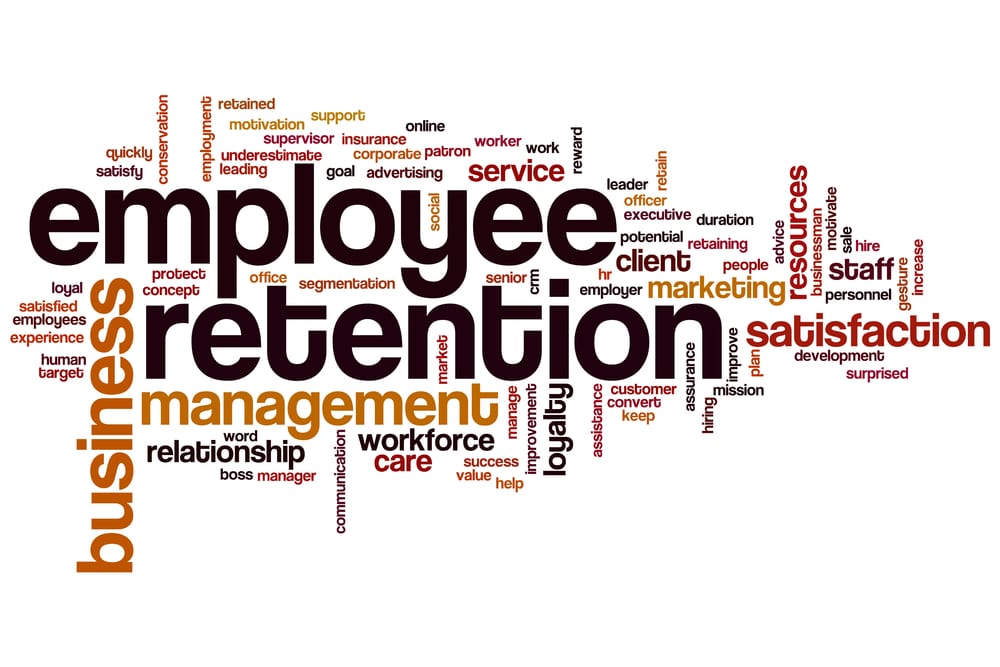In this uncertain economic climate, what should managers use as their road map? How can companies manage their talent in a way that encourages its growth, prepares for the best, as well as the worst, and maximizes engagement, on a daily basis? One key to talent retention is empowerment. Another is trust. Another is goal setting and performance management that is characterized by autonomy and self-monitoring. Employee development can come in many forms, but development is the single most important retention technique, according to
Track performance and engagement
One step toward reversing or minimizing low engagement levels is to treat employees like individuals and members of a community, rather than representations of a number or vague measurement of ‘performance’ or ‘engagement.’ Part of this engagement may be facilitated with the help of data tracking and consolidating software such as ERP systems that allow employees to monitor their own progress in relation to their professional goals, over a given period of time, allowing them to track discrepancies in performance between where they should be and where they are. In this way, there is a level of involvement and self-tracking—hence also a sense of control and ownership over one’s own progress.
According to Gallup, good managers focus on both performance and engagement, in order to maximize employee satisfaction and retention, as well as overall team performance. Moreover, strong managers maximize engagement “in three primary ways”: they are “involved in their employees’ work lives”; they “help employees set goals and prioritize their projects”; and they “hold their employees accountable for performance.” Keep in mind that there are appealing and not-so-appealing ways for managers to interact with employees: and keeping an eye on the difference is key since almost half the employees who leave companies do so because of their supervisors.
How to retain the talent
So how can companies retain the talent they attract? One factor is paying a fair wage to both men and women, keeping in mind industry standards and gender equity. Other employee engagement tools include praise and recognition, clear career progression, training and feedback, autonomy and task variety, and feeling valued. Mary Schaefer argues, however, that we tend to focus too much on shorthand phrasing and metrics, losing sight of the real issue: how “to engage real people at work.” In order to do that, managers must reevaluate their methods of interacting with employees. Schaefer suggests meaningful one-on-one meetings, effective team meetings, and making resources readily available to employees, in order to help them succeed.
Therefore, employee engagement and corporate growth are directly tied to excellent managers utilizing effective leadership strategies, on a regular basis. According to Rutgers University, results-driven management has replaced actions-driven management, in both the for-profit and not-for-profit worlds. A few ways to ensure success, on this front, include keeping the end-goal in mind, building on previous successes, relying on trial and error, providing frequent reinforcement, monitoring progress, and making adjustments when needed. Although these strategies may seem as if they have the potential to mimic micromanagement, there’s no need for managers to be overly involved in tracking progress; there simply need be self-monitoring tools implemented in order to allow employees to track their own progress.
But how do we retain valuable employees, once we’ve found them? And retention is especially important because, according to Entrepreneur, the longer they stay with an organization, the more productive they get. Moreover, favoring internal promotions over external hiring for higher-level positions reduces costs and increases retention and employee satisfaction. Also, feeling valued is more important to employees than their salaries, so it’s crucial that managers communicate effectively and often with their employees. Offering team members a variety of opportunities to advance and grow, in their positions, is also key to employee satisfaction.
The Growth Mindset
Harvard Business Review recently published a fascinating article about the leadership development potential that comes about when companies adopt a growth mindset. The authors, Carol Dweck and Kathleen Hogan, single out Microsoft as an example of a company with a strong growth-mindset: “the belief that talent should be developed in everyone, not viewed as a fixed, innate gift that some have and others don’t.”
To that effect, Microsoft is encouraging creative learning by hosting a hackathon, introducing high-risk projects like HoloLens, and redefining their talent program. For example, the yearly “Talent Talks” enlists heads from each arm of the organization to meet with the CEO and his senior leadership team to review employees, move people to different teams, and discuss development opportunities. In this way, they are able to more easily identify and develop talent and growth opportunities among current employees—which in turn provides more incentive for people to want to remain in their current positions, rather than leave for a position at another company.
The Forbes Human Resources Council also has a few excellent suggestions for improving employee retention and facilitating growth, as opposed to shrinkage. First, Catherine Decker advises, conduct ‘stay’ interviews annually, at the very least, in order to gauge reception of recent company events, alert team members about upcoming events, and answer any questions they might have. Enrica Sighinolfi says that Opportunity Network makes an effort to empower employees as much as possible in order to make everyone “feel like an entrepreneur in their own area of competence.” Kim Roneree suggests providing a way for team members to communicate questions or feedback anonymously. And Sarah O’Neill says that transparency can dramatically increase retention and employee loyalty, although leadership teams often shy away from it.
Conclusion
Exemplary leadership and smart retention strategies can help companies maximize their profits and company growth, as well as provide a solid foundation for strong workplace culture that cultivates trust and encourages employees, building them up, rather than tearing them down. How does your company promote employee retention and development? Who are exemplary leaders in your department or management team? Share your experience in the comments section below.


